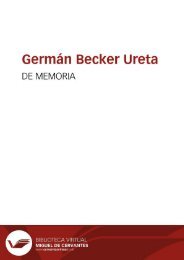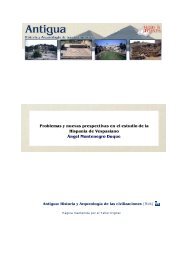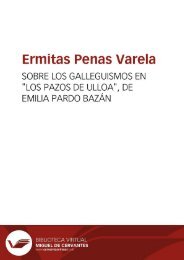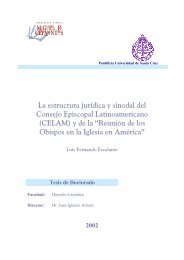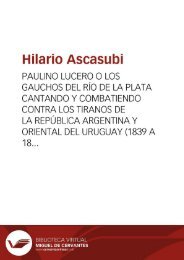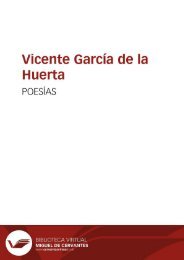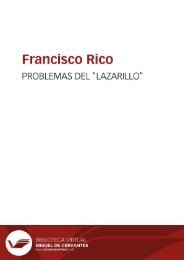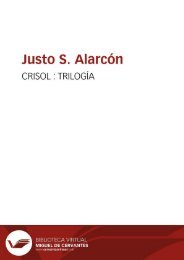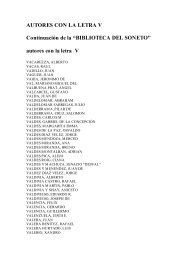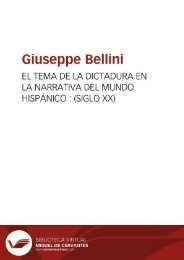Create successful ePaper yourself
Turn your PDF publications into a flip-book with our unique Google optimized e-Paper software.
Anales galdosianos [Publicaciones periódicas]. Año XII, 1977<br />
<strong>Galdós</strong>- does not, in fact, exist prior to the narrative as his capacity to «evoke» Manso might imply.<br />
He exists only thanks to Manso, who creates him within the narrative. So, the character evokes the<br />
author, the creation creates his creator; and one may ask, as twentieth-century writers so often have:<br />
who creates whom, who owes his existence to whom in the fictional relationship? The answers are<br />
as ambiguous as the question is intriguing.<br />
Manso, ever gentle and good, is everybody's friend. For his part, <strong>Galdós</strong> as narrator is often the friend<br />
of his « criaturas ». But never is the friendship so close as it is between «el amigo» Manso and<br />
<strong>Galdós</strong> . Why? Because, like the best of friends, they are inseparable. If Manso cannot pinpoint the<br />
«subtle arts» of his creation, it is because the miracle of artistic birth cannot be defined or described<br />
with precision. The creator/creation dichotomy, when carried beyond the obvious and subjected to<br />
analysis, becomes so blurred that no order of sequential precedence between its two factors seems<br />
possible. As a consequence, a character like Manso endowed with the illusion of autonomy assumes<br />
a duality whose two sides the reader might forcibly isolate from each other if he wishes but which<br />
operate conjointly at every moment in the book. It is not, as Gullón would have it (p. 88), that part<br />
of Manso's narrative «I» participates and part contemplates: all of him does both at the same time.<br />
He is poet and empiricist, histor and eye-witness wrapped into one 135 . That is why Manso can first<br />
talk of someone who conjures him (Ch. I: birth as a fiction) and then go on to speak calmly of his<br />
father and mother, to whom he owes his life and all that he is (Ch. II: birth within a fiction). Truly,<br />
an imagined entity should not be depending on a bowlful of chickpeas for his sustenance. It should<br />
be sufficient for a reader to read him. Yet, in that paradox lies the secret of fictional creation, which<br />
must live out this tension of being and not being autonomous. Of course, it is easy to envision the<br />
protests against such a reading: You can't have it both ways! You can't have Máximo creating a<br />
creator who has created him! But that is precisely the beauty of fiction, as <strong>Galdós</strong> fully realized. Its<br />
delectable ambiguity not only allows us to have it both ways, but forces these paradoxes upon us.<br />
Wordsworth's dictum, «The Child is father of the Man», seems appropriate to the case. Naturally, we<br />
know that there is no such unfathered creature as an autonomous character in the world of fiction.<br />
A character who is a paradox, a game, an irony, a phantom, is, in the end, impossible. Therefore,<br />
the question as to whether or not Máximo Manso or Grau's puppets or Capek's robots or Pirandello's<br />
homeless half dozen or Don Quijote are truly autonomous is beside the point when we acknowledge<br />
its illusoriness. The significance of the issue lies in our capacity to apprehend simultaneously that<br />
135 See Robert Scholes and Robert Kellogg, The Nature of Narrative (New York: Oxford Univ.<br />
Press, 1966), Ch. VII.<br />
97



